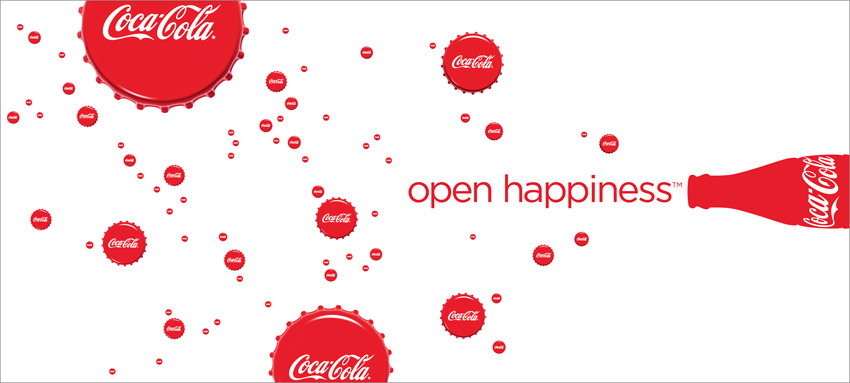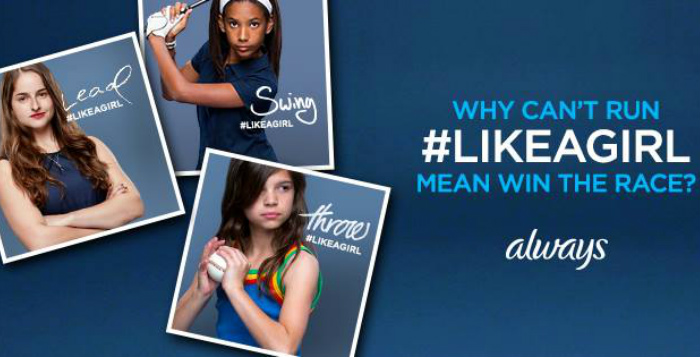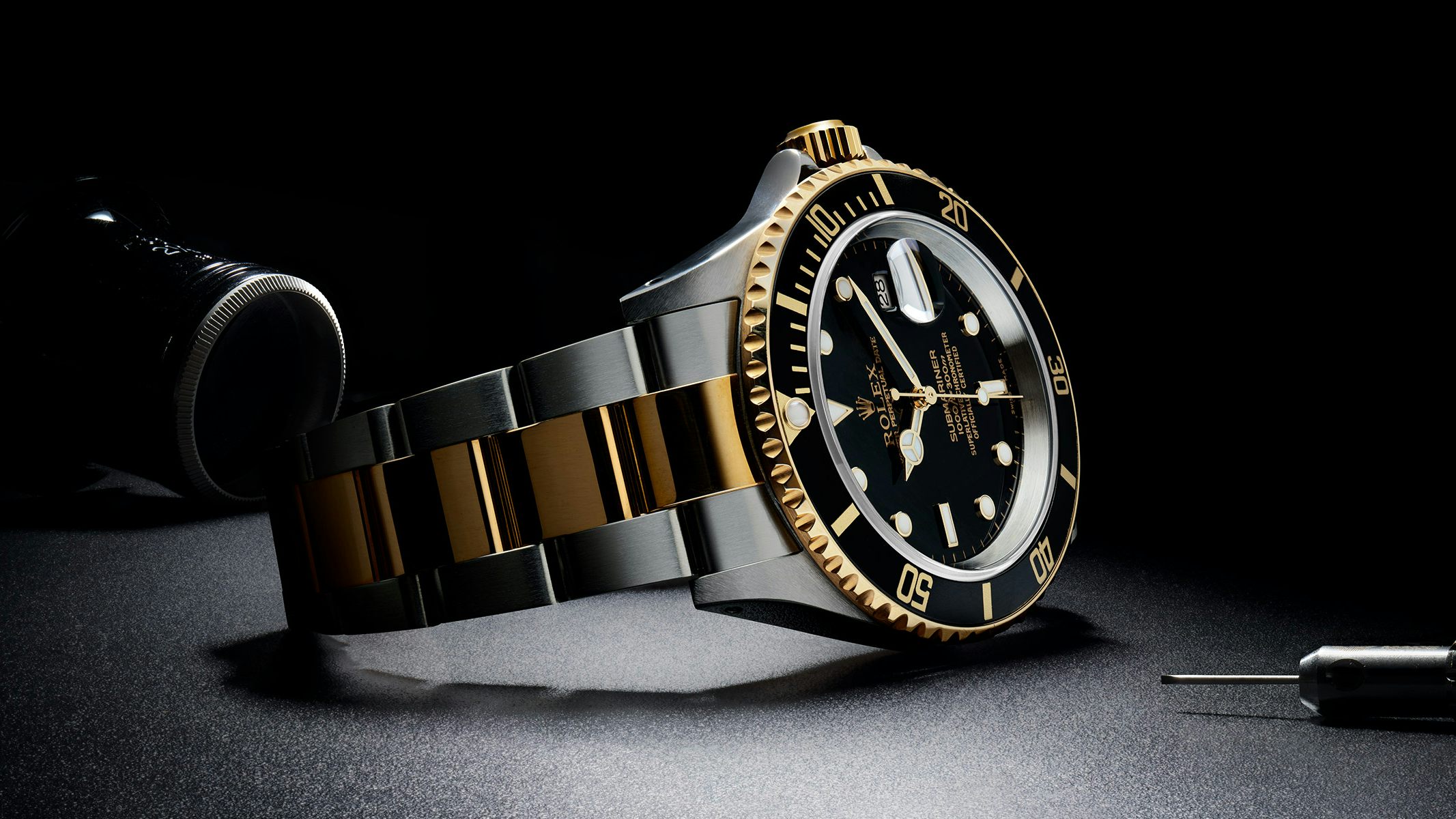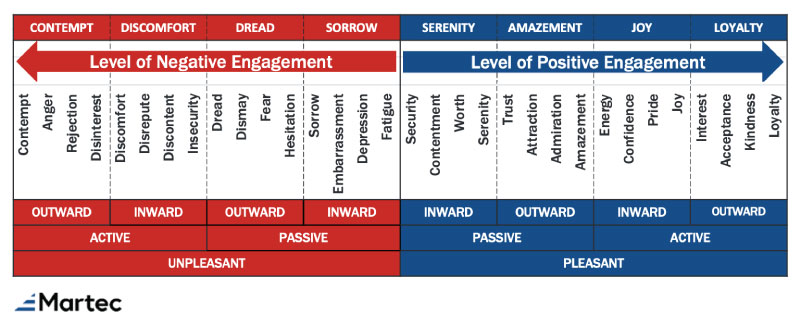Introduction
We're emotional creatures. It's a fundamental aspect of our humanity that influences our decisions, including what we buy. Advertising, at its core, is about tapping into these emotions to drive purchasing decisions. Different emotions can push consumers in different directions, making them a powerful tool for advertisers to leverage.
Explaining the AIDA Funnel

Before we delve into the role of specific emotions in advertising, let's familiarize ourselves with the AIDA marketing funnel. AIDA stands for Awareness, Interest, Desire, and Action. These four stages map out the journey a consumer must take before making a purchase. Each stage requires specific strategies to efficiently guide consumers from one end of the funnel to the other.
Emotions in the AIDA Funnel
In the Awareness stage, advertisements need to grab attention and provoke curiosity. High-arousal emotions like surprise or excitement work well here. An ad that evokes surprise could be a teaser that reveals just enough about a product to pique interest. In the Interest stage, ads should build on that initial engagement by eliciting emotions like happiness or anticipation. This could be an ad that tells a captivating story about the product. For the Desire stage, ads should elicit emotions such as desire or envy, which can be achieved by showcasing the lifestyle or benefits that come with the product. Finally, in the Action stage, ads need to incite a sense of urgency or fear of missing out (FOMO) to prompt the final purchasing decision. This can be an ad that includes a limited-time offer or an exclusive deal.
The Role of Emotions in Advertising
It's no secret, psychology plays a substantial role in advertising (Reference from a published Medical Journal for proof). Emotional engagement is crucial for a successful advertising campaign as we just touched above, as it allows brands to form meaningful connections with their audience. These connections often lead to increased brand loyalty and higher conversion rates. Let's embark on an intriguing journey to discover how each emotion can be effectively deployed in your marketing funnel and how to locate the optimal position to do so!
Harnessing the Power of Joy
Happiness, often associated with a positive outlook, is a powerful motivator in buying behaviors. Many successful ad campaigns have leveraged happiness to great effect. Coca Cola's "Open Happiness" campaign is a prime example, associating their product with joy and good times. Tips for incorporating happiness into advertising include associating your product with joyful memories or experiences.

Optimizing Your Ads with Happiness
In the context of the AIDA funnel, happiness is an incredibly powerful tool at the awareness stage. Here, the primary goal is to grab the consumer's attention and create an impactful and positive first impression. Happy advertising has a way of captivating the audience, drawing them in with the promise of shared joy, positivity, and good times. By associating your product or service with these uplifting emotions, you create a favorable mental image in the consumer's mind. This positive association then becomes intertwined with your brand, setting the stage for further engagement. Thus, happiness not only captures attention but also primes the consumer for the next stages in the marketing funnel, providing a solid base for building interest, desire, and ultimately action.
Leveraging Fear in Advertising to Boost Sales
Fear is a primal emotion that can catalyze action. This makes it a potent tool in advertising. An example of a fear-based ad is the infamous "1984" Super Bowl commercial by Apple that played on people's fear of conformity. Effective utilization of fear in marketing strategies requires careful crafting of your message. One way to achieve this is by establishing a scenario that creates a sense of urgency or imminent danger, then positioning your product or service as the solution or protective measure against that potential threat. This not only incites fear but also illustrates the value and necessity of your offering, significantly influencing the consumer to act swiftly and decisively.

Use Fear to Enhance Conversion Rates
Fear finds its most potent application at the desire stage of the AIDA funnel. This stage is all about converting a latent interest into a palpable need for your product or service. Fear, as an emotion, can be leveraged to heighten this sense of need. When an advert communicates a situation that could potentially harm or disadvantage the consumer, fear is stirred. This fear, however, doesn't exist in a vacuum. It's counterbalanced with the presentation of your product as a solution, a shield against potential harm. This juxtaposition of fear and solution creates a compelling desire in the consumer's mind - a desire to procure your product and avert the feared situation. Hence, with a fear-based approach, desire is kindled not just to want but to need your offering as a necessary provision against a potential threat.
The Power of Sadness in Advertising
Believe it or not, sadness can be an effective emotion in advertising. It triggers empathy and can lead to increased engagement. The 'Puppy Love' ad campaign by Budweiser, which featured a touching story of friendship between a puppy and a horse, effectively used sadness to connect to the audience. The key to using sadness is to make sure your message is genuine and not manipulative.

Incorporating Sadness for Enhancing Engagement
In the multifaceted framework of the AIDA funnel, sadness unlocks its full potential at the Interest stage. At this point, consumers have a basic awareness of your product or service and are primed to delve deeper. Utilizing sadness in your advertisements during this phase can serve to intensify this exploration. When a consumer encounters an advertisement that triggers feelings of empathy or a shared sense of humanity, they are more likely to become emotionally invested in the narrative. This emotional investment can foster a deeper connection with the brand, prompting the consumer to seek more information about the product or service. The resulting increased engagement is exactly what the Interest stage aims to achieve. Therefore, by judiciously incorporating sadness in your advertisement at this stage, you can effectively capture the consumer's attention and interest, paving the way for the subsequent stages of Desire and Action in the marketing funnel.
Surprise: A Key to Memorable Advertising
Surprise makes advertisements memorable. It captures attention and sparks curiosity, often leading to increased brand recall. An example of a surprising ad campaign is Old Spice's 'The Man Your Man Could Smell Like'. To engineer ads that evoke surprise and stick in the viewer's memory, you could introduce a visual element that defies expectation, or you could start with a commonplace situation and cunningly inject a twist that turns the ordinary into the extraordinary. This could be as simple as presenting a typical everyday event, but with a surprising outcome or a character acting out of the norm. Alternatively, you might take a well-known narrative and flip it on its head, defying the viewer's expectations and leaving a lasting impression. This surprise factor not only grabs attention in the moment, but it also improves brand recall later on, as the viewer remembers the unexpected twist in your ad.

Capitalizing on the Element of Surprise in Advertising for Long-lasting Memorable Impact
In the intricate tapestry of the AIDA marketing funnel, surprise is most potently employed in the initial stage: Awareness. At this phase, the primary objective is to capture the consumer's attention and lay the groundwork for their interest in your product or service. The element of surprise, by its very nature, is a disruptive force that demands attention. When an advertisement deviates from the expected and enters the realm of the surprising, it inevitably stands out, capturing the consumer's attention. This unexpected deviation can spark curiosity, prompting the consumer to seek more information about the product or service in question. By successfully capturing attention and piquing curiosity, surprise sets the stage for the transition to the Interest phase of the funnel. It leaves an indelible imprint on the consumer's mind, aiding brand recall in the long run. Thus, by strategically leveraging surprise in your advertisements at the Awareness stage, you can ensure a memorable first impression, effectively setting the pace for the subsequent stages of Interest, Desire, and Action in the marketing funnel.
Utilizing Anger to Boost Consumer Motivation
Anger can spur consumers into taking action. It can be harnessed to highlight injustices or discrepancies and motivate consumers to take corrective action. It's critical to use this emotion responsibly in advertising to avoid promoting harmful behaviors or exploiting sensitive issues. For example, the Always '#LikeAGirl' ad campaign effectively channeled anger by challenging and highlighting the negative gender stereotypes prevalent in society. The campaign's strategy was to provoke a sense of righteous indignation among viewers, directed towards the unfair labeling and limitations imposed on young girls, equated to being weak or lesser. This anger wasn't just passively felt, but was used as a springboard for change, motivating viewers to reconsider their perception and take action in dispelling these stereotypes. Thus, the anger, tactfully and ethically used in this context, became a tool not for destruction but for change and empowerment, thereby exemplifying the responsible use of this emotion in advertising.

The Power of Anger for Increased Consumer Motivation
The deployment of anger as an emotive tool in advertising has a particularly potent role to play at the pivotal "Action" stage of the AIDA marketing funnel. This stage encapsulates the final push, the decisive nudge that propels the consumer from considered interest to actual action, such as making a purchase or sharing promotional content. Anger, as an emotion, is a powerful catalyst for sparking motivation. In the context of an advertisement, it can be utilized to spotlight discrepancies, injustices, or societal issues that resonate with the consumer's own values or experiences. A prime example of this is the Always '#LikeAGirl' campaign, which effectively harnessed anger to challenge and change gender stereotypes. When confronted with such an emotionally charged situation, consumers are often driven to action as a means of redressing the perceived wrong. However, it is paramount that this anger is invoked responsibly, mindful of the potential to incite harmful behaviors. Thus, with a thoughtful and sensitive approach, anger can be used in advertising to motivate consumers, triggering the desired action at the final stage of the AIDA funnel.
Leveraging the Power of Disgust
Disgust can be a powerful motivator, making consumers want to avoid certain scenarios. The 'This is Your Brain on Drugs' campaign successfully leveraged disgust to discourage drug use. When deploying disgust as a tool in your advertising campaign, it's essential to tread carefully. An overemphasis on elements that revolve around this emotion could risk alienating or excessively repulsing your audience, resulting in the exact opposite of desired engagement. For instance, a graphic depiction of the effects of smoking - charred lungs, blackened teeth, and other gruesome visuals - could conceivably provoke a strong emotional reaction and drive home the health risks associated with smoking. However, an overly graphic representation could also end up overwhelming your audience, causing them to disengage or disregard the message entirely. Consequently, it's important to strike a balance, ensuring that the disgust elicited serves to drive the point home effectively, without venturing into the territory of shock value for its own sake.

How to Use Disgust Effectively in Advertising
Disgust is an emotion that can be used strategically at the Desire and Action stages. At the Desire stage, disgust can be used to highlight discrepancies or injustices that motivate consumers to take corrective action. For example, a campaign could use graphic visuals of the effects of smoking to effectively drive home the health risks associated with it and encourage people to quit. However, it's important not to overdo it as this could lead to viewers disengaging from or disregarding your message entirely. At the Action stage, disgust can be used as a tool to spark motivation and provoke consumers into taking action. It can be harnessed to highlight injustices or discrepancies and motivate consumers to take corrective action. However, when using this emotion in advertising it is important not to overdo it as this could lead to viewers disengaging from or disregarding your message entirely. Additionally, deploying anger must also be done responsibly since it has the potential of inciting harmful behaviors if used irresponsibly.
Desire: Creating a Need for Your Product
Desire leads to purchases. By creating a need or desire in advertising, consumers are more likely to act. Ads for luxury items like Rolex watches effectively create a sense of desire. Creating desire in advertising can be the catalyst for consumer action, leading them from mere interest to actual purchases. For example, luxury brands like Rolex masterfully create a sense of desire in their advertisements. They elegantly showcase their timepieces' intricate design, high-quality craftsmanship, and the status that comes with owning a Rolex watch. However, when stoking the flames of desire, advertisers must tread with care. Overpromising, such as portraying a product as a solution to all of life's problems, can lead to consumer disappointment and a resultant loss of trust. This is why it's crucial to emphasize the real, tangible benefits of the product, without crossing into the realm of unrealistic promises.

Optimizing the Use of Desire in Your Advertising Strategy
Using desire effectively in advertising demands that marketers highlight the tangible benefits and features of the product or service and illustrate how these align with the consumer's needs or aspirations. The aim here is to paint a vivid picture of how the product or service will enhance the consumer's life or resolve a problem they encounter. For instance, a luxury brand like Rolex uses high-quality imagery and narrative to portray their watches as not just time-keeping devices, but as status symbols and items of exquisite craftsmanship. Nevertheless, while it's essential to stir the flames of desire, advertisers need to be cautious not to overpromise or set unrealistic expectations, as this can lead to consumer disillusionment and a subsequent loss of trust. So, the real art lies in balancing the promise of value with the reality of the product's performance.
Harnessing Trust to Reinforce Consumer Confidence
The use of case studies, testimonials, and transparent business practices are all effective methods of fostering trust and confidence among consumers. For instance, Dove's 'Real Beauty' campaign has been notably successful in building trust by promoting authenticity and challenging conventional beauty standards. The campaign, by featuring women of different shapes, sizes, and backgrounds, resonated with consumers, making Dove a trusted and relatable brand. Similarly, Patagonia's environmental advocacy, transparent supply chain, and commitment to sustainability have fostered deep trust among its consumers, who see the brand as both a provider of quality outdoor apparel and a responsible corporate citizen. On the other hand, Buffer, a social media management platform, has earned consumer trust through its radical transparency, sharing everything from its pricing structures to its employees' salaries. Therefore, whether through authenticity, corporate responsibility, or transparency, building trust is indispensable in the AIDA funnel, leading consumers from mere interest to becoming loyal, repeat customers.
Leveraging Trust in Your Marketing Strategy
Trust, as a crucial component in the advertising world, needs to be woven into every level of the AIDA funnel. From the first moment of awareness, through the stages of interest, desire, and all the way to the final action, trust must be the bedrock upon which the customer-brand relationship is built. It's not just about making an initial sale; trust is what transforms a one-time customer into a loyal, repeat patron. It lends credibility to the brand's claims, reinforces the consumer's desire for the product or service, and ultimately, drives them to commit to the action of purchase or subscription. Thus, the importance of establishing and maintaining trust throughout the entire AIDA funnel cannot be overstated, as it is the key to securing not just the consumer's attention, but their long-term loyalty as well.
How To Combine Emotions
Combining emotions in advertising is an incredibly effective way to stimulate a more profound response from consumers, ultimately driving them to action. The integration of various emotions can amplify the resonance of the advertisement, making it more memorable and impactful. Advertisers often fuse emotions like happiness, excitement, sadness, and surprise to evoke a more complex and profound emotional response that goes beyond the typical one-dimensional emotional appeals. This multi-emotional approach can create a more immersive and emotionally engaging experience for the consumer, making the advertisement more captivating and compelling, thus increasing the likelihood of customer action.

The Power of Blending Emotions in Advertising
Within the AIDA funnel, these complex emotions can be utilized most effectively during the Interest and Desire stages. At the Interest stage, multi-emotional advertising can amplify curiosity and intrigue, encouraging the consumer to further explore the product or service. For instance, an advertisement that blends the happiness of owning a new car with the excitement of the freedom it offers can create a strong emotional connection, piquing the interest of potential customers.
During the Desire phase, complex emotional appeals play a critical role in transforming interest into a deep-seated desire for the product or service. Here, advertisers can leverage the power of emotions like aspiration, pride, and belonging to create an emotional narrative that not only highlights the product's features and benefits but also paints a vivid picture of the emotional rewards that come with owning the product. For example, a luxury brand may fuse aspiration and pride in their advertising to create a narrative of exclusivity and prestige around owning their product, thereby stoking the flames of desire among their target audience.
Optimizing the Use of Complex Emotions in the AIDA Funnel
Remember, the goal here is to create a compelling emotional narrative that aligns with the consumer's aspirations, needs, or wants. By doing this, advertisers can effectively stimulate a complex emotional response that drives consumer action, propelling them from mere interest to definitive action in the AIDA funnel. However, it's also crucial to uphold trust and authenticity in this process, as overreliance on emotional manipulation can backfire, leading to consumer skepticism and loss of trust. Thus, the true art lies in striking the right balance between emotional appeal and authenticity, to create a compelling yet credible narrative that resonates with consumers and drives them to action.
Conclusion
Emotions are powerful motivators in advertising, influencing decisions and driving sales. Understanding and leveraging these emotions can lead to more successful ad campaigns. The key is to use emotions responsibly and ethically, ensuring a genuine connection with your audience. As marketers, it's worthwhile to experiment with using different emotions in your campaigns to see what resonates best with your audience. Emotions can truly be the bridge between your brand and your consumers.











